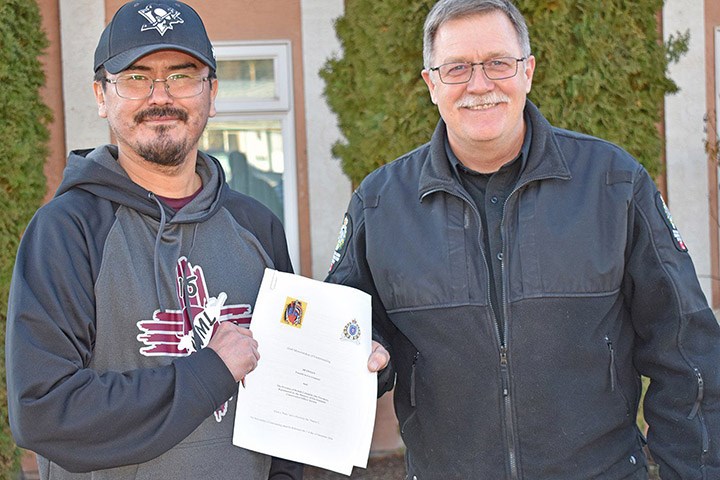Community concerns surrounding the future of the moose population near a small, remote First Nation west of Williams Lake has led its newly-elected chief to ink a five-year memorandum of understanding with the B.C. Conservation Officer Service (COS).
Yunesit’in government (Stone) is the latest First Nation to reach such an agreement with the COS to promote wildlife sustainability through joint communication, collaboration and enforcement.
“It’s going to open the door to have some meaningful meetings, and taking better jurisdiction and care of our moose and deer population out west,” Chief Lennon Solomon said Nov. 30 outside the Tsilhqot’in National Government office in downtown Williams Lake.
Solomon, who was elected chief of Yunesit’in in Sept. 2020, said the community voiced their concerns to him after seeing a decline in moose numbers in recent years.
COS Insp. Len Butler of the Thompson Cariboo Region said working with Solomon is a real benefit.
“We have the same concerns, and it’s the unlawful hunting of cow moose and if we’re working together, it’s much better than working apart on these issues,” Butler said.
“Having that backing and us working together is good for the moose populations but also all the species of wildlife.”
This year has seen an increase in illegal hunting activity such as hunting on private lands and trafficking, Butler noted, stating there has also been a lot of ‘unfortunate’ night hunting activity within the area.
Butler and Solomon both agreed there is more than one factor leading to the moose population’s decline, including predation and logging.
Tsilhqot’in National Government Tribal Chair Chief Joe Alphonse described the Yunesit’in caretaker area as prime moose habitat that has been heavily logged. The area was also heavily impacted by wildfires that tore through the region in 2017.
“They’d say that our hunters used to go out in the wilderness and get lost, now there are so many logging areas out there they go out on the logging roads, and they get lost,” Alphonse said.


.png;w=120;h=80;mode=crop)
